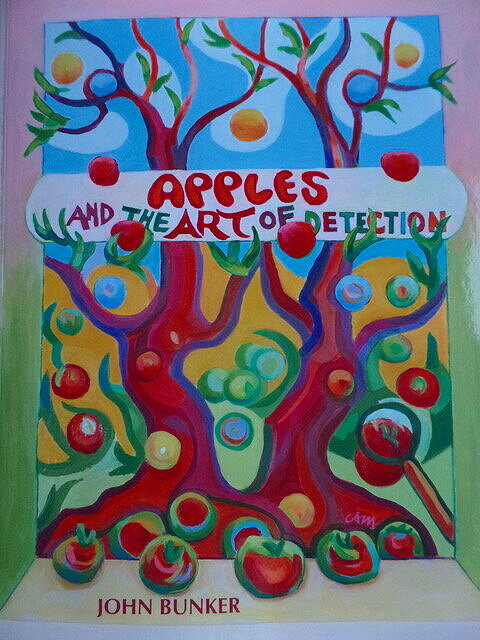Looking for something to do this winter while you’re waiting for the apple trees to bloom once again? We can suggest a few good apple activities to pass the time when the temperatures are frigid and the nights long and dark.
READ
Apples and the Art of Detection, by John Bunker. In case you haven’t read it yet, this is your opportunity to hear more about the John’s adventures in tracking down and saving many of the apples offered in our CSA. Full of pictures and paintings, John’s quirky drawings, stories of Maine’s quirky orchardists and the kind of history they never taught you in school, this book will entertain you and teach you how to top work your favorite varieties next spring. You can order it here.
Uncultivated: Wild Apples, Real Cider, and the Complicated Art of Making a Living, by Andy Brennan. John read this book before it was published and has been recommending it to apple and cider devotees as well as friends and acquaintances who don’t care a thing about apples ever since. I am just getting around to reading it now, and I finally understand why he is so enthusiastic. Andy (a quirky NY orchardist) is an excellent writer, an engaging story teller, and a deep and daring thinker about human-plant relationships, agriculture, economy and culture. His edgy ideas challenge me, often make me uncomfortable and keep me laughing. This book is as good as a bottle of Andy’s cider. One place you can order it is here.
Wild Apples, by Henry David Thoreau. Not exactly hot off the presses, but this essay published in 1862 is by far our favorite piece of writing by Thoreau. In it he laments the demise of the foraging culture and the growth of the commercial apple industry. To Thoreau his favorite fruit was not only a symbol of peace but also a symbol of the country’s connection with the land. He warns Americans, who were at the time, engaged in an “uncivilized” war, of losing their connection with the soil because once lost, there was no going back. There are lots of places to purchase this essay, but you can download it for free here.
Subscribe to Malus, a quarterly print zine featuring “bittersharp criticism and commentary by America's great cider thinkers”. In Malus cider and social justice speak a common language. The articles are informative and provocative - ok, they are also kinda geeky. The poetry is charming. You can subscribe here.
LISTEN
2020 Heritage Orchard Conference. Listen to the webinars recorded from The Heritage Orchard Conference hosted by the University of Idaho’s Sandpoint Organic Agriculture Center. The conference attracts a diverse group of heritage tree fruit enthusiasts for presentations ranging from heritage fruit exploration to apple identification. You can find them all here.
Apple Identification 101, a talk by by John Bunker, live streamed from the 2020 virtual Common Ground Fair. Find it by visiting the MOFGA website here. The talk took place at 1:00 pm Friday so you’ll have to fast forward through some other Friday talks to find it..
An Apple History of Maine, a talk by John Bunker for the Maine Historical Society’s “Maine at 200” Series recorded on October 14, 2020. John’s presentation draws from the published and unpublished writings of Mainers over the past 200 years to connect the dots between the agricultural history of Maine and the importance of the apple in that history. A different kind of presentation than John usually gives. Listen here.
The Maine Heritage Orchard: What is it and Why Should We Care?, a talk by John Bunker for the Skidompha Library”s “Chats with Champions” series, recorded October 29, 2020. In this talk you can hear John read Sufi poetry, talk about saving old apples, and sing. That ought to melt the snow in your orchard. Click here.
COUNT
the days until the CSA begins on the exquisite 2020 Maine Heritage Orchard Calendar. The calendar features the amazing and wholly original photography of William Mullan whose pictures uncover the wonder and beauty in the common place, the scarred, the misshapen and the tossed aside. Once you view an apple through William’s lens, you will never see apples the same way again. Buy one for yourself or lots for your apple-loving friends here. You will be supporting the Maine Heritage Orchard with your purchase. (And don’t wait to order. Samin Nosrat tweeted about this calendar, and they sold out instantly. More are being printed.)




